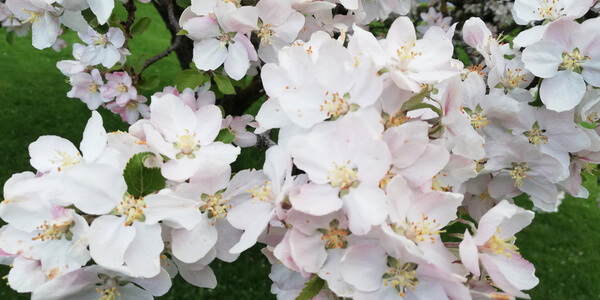Native most of Europe, Whitethorn hedging (crataegus monogyna), also known as Hawthorne, is a fast-growing, thorny, native, deciduous hedging plant that features striking dark and glossy green leaves in spring.
Commonly found in gardens across Ireland, Whitethorn is a popular species for many as its dense structure helps make it an effective intruder deterrent, privacy screen and wind shelter.
But, did you know that planting Whitethorn can also be beneficial if you own a farm too?
Planting hedgerows doesn’t just help to make your farm look nice, it helps to improve the biodiversity around your farm, helps to provide shelter for any livestock and crops, and helps to cut down wind speed making it a great investment for your land.
Why Whitethorn hedging?
Whitethorns are deciduous trees, which are suitable for many types of landscapes and soil types, including farmlands. It thrives in a variety of conditions including full sun, partial shade and exposed inland and coastal positions making it desirable for many. As well as this, Whitethorn provides some stunning colours throughout the year, from green through to soft yellow and bright red as the seasons change.
In addition to its colourful foliage, Whitethorn hedging offers an array of seasonal attributes boasting a tonne of scented flowers and glossy red haws (berries) which helps attract rich biodiversity.
In the spring, Whitethorn hedging produces an abundance of striking white scented flowers, which are extremely popular with insects such as bees and butterflies. Once pollinated these beautiful, white flowers develop into glossy red fruits known as haws, which offer a much-loved treat and vital food source to many native birds and wildlife on farms. So, by planting Whitethorn hedging, you’re not only making the landscape around you look good, you’re helping to stop the decline of biodiversity too.
Benefits of planting hedges on your farm
As well as stopping the decline of biodiversity, hedgerows help to control any livestock you may have on your farm. They are also incredibly important sources of shelter for cattle, sheep and wildlife, particularly in inclement weather. As well as providing shelter to wildlife and native birds, they are also sources of food for many insects during the summer and birds during the winter.
When should I plant a new hedge on my farm?
The best time to plant your new Whitethorn hedges is late autumn until early spring (October to March) as this allows new hedges to grow and flourish. There are various types of hedge plants you can buy including root ball plants and potted plants, although we suggest opting for bare-root ones as they are the most cost-effective solution for a farm.
Bare root plants
Bare root hedging is the most cost-effective solution for your farm and consists of plants in their most basic form – bare roots and no soil, pots or compost.
Bare root plants are an incredibly popular option because you get a lot of plants for your money, which is particularly good if you have a lot of land to cover. You should keep the roots of your new plants covered for a few days, or until they are ready to go in the ground to protect the root hairs from drying out.
Planting the hedge
Before planting any hedging, you need to decide on the best location. A recommended location is along a farm road as it can be accessed by farmers from both sides for maintenance and pruning.
Once you have decided on the perfect location, the next step is digging up the area to plant your hedges. With a digger, you want to loosen the soil from the ground, place the roots of the plants in the ground and then cover again.
You should aim to plant 6-8 root balls per metre length of hedge in a double row and space them approximately 30cm away from each other to allow them room to grow. Once your whitethorn hedging has been planted, you should prune for the first three winters as this will encourage your hedges to fill and create a thicker hedge. After 3 years you should cut the hedgerow down to approx. 2ft off ground level to encourage further shoots to develop and aid more growth.
Your content goes here. Edit or remove this text inline or in the module Content settings. You can also style every aspect of this content in the module Design settings and even apply custom CSS to this text in the module Advanced settings.

